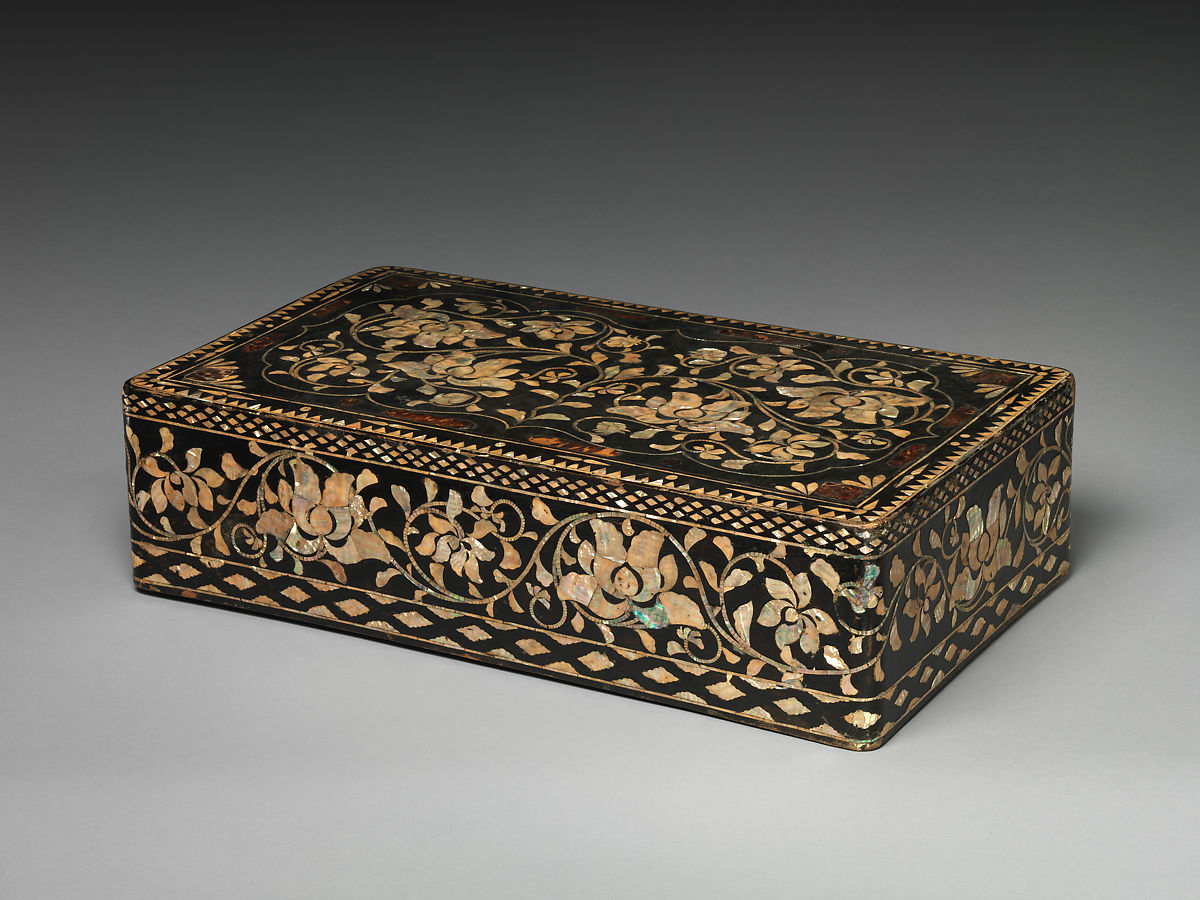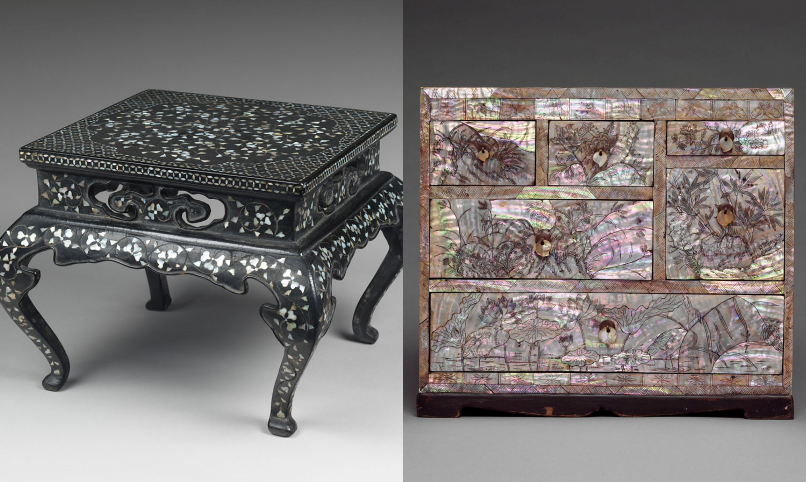- 한국어
- English
- 日本語
- 中文
- العربية
- Español
- Français
- Deutsch
- Pусский
- Tiếng Việt
- Indonesian
By Honorary Reporter Crystal Grant from U.S.
Photos = Crystal Grant, Metropolitan Museum of Art

This exhibition showcases nearly thirty outstanding works of Korean lacquerware and marks the Museum’s first exhibition dedicated solely to Korean lacquerware.
I enjoy learning about Korean culture through many mediums including art, so I was excited to hear about an exhibition of decorative Korean art pieces at the Korean art section of the Metropolitan Museum of Art in New York. I visited this exhibition on June 17.
"Shell and Resin: Korean Mother-of Pearl and Lacquer," to run through July 5, highlights the pairing of lacquer and mother-of-pearl art pieces unique to Korea’s rich culture and heritage. Lacquerware comprises objects decoratively covered with lacquer, a glossy hard sap coating, and mother-of-pearl forming the inside lining of the mollusk shell.
This exhibition was the museum's first for Korean lacquerware. Though lacquerware is not indigenous to Korea, the event highlights how aspects of Korean lacquerware is different from other countries. For example, Korean lacquerware has larger shells with cracks in them to create a texture in flower and flower bud designs.

This clothing box decorated with peony scrolls is from the 17th century.
The artwork featured modern creations and art dating back to the Joseon Dynasty (1392-1910). This exhibition is also a reminder of how everyday objects can bring beauty into life, with many of the pieces on display having functional uses such as a chest, table and stationary box.

On the right is a 19th-century table decorated with floral scroll and on the left is a chest from the early 20th century decorated with phoenixes, colored roundels (taegeuk) and flowers.
The exhibition also showcases the process of crafting Korean lacquerware. Korean lacquer, called otchil in Korean, is developed from the sap of the lacquer tree called toxicodendron vernicifluum. The sap is filtered and processed for use in lacquerware pieces.
I especially found interesting the process of artists creating the designs on the shells to be applied to whatever object the design will appear. The artist first chooses the shell, creates a drawing on a thin piece of paper and glues it to the shell. Afterwards, he or she cuts out the pattern out of the shell. The artwork on the lacquerware is simple yet elegant, varying from beautiful scenes of nature such as flowers and insects to more whimsical depictions of dragons.

This clothing box decorated with dragons is from the 19th century.
The Korean wing is a permanent part of the museum and has plenty more of Korean art.
enny0611@korea.kr
*This article is written by a Korea.net Honorary Reporter. Our group of Honorary Reporters are from all around the world, and they share with Korea.net their love and passion for all things Korean.